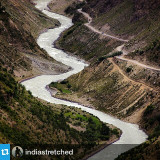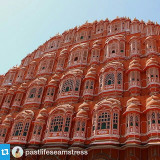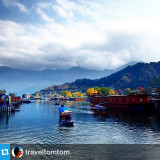Random image from our India photo collection

Gujarat
History
Gujarat is situated on the western coast of India. The name of the state has been derived from Gujjaratta, which means the land of the Gujjars. It is believed that a tribe of Gujjars migrated to India around the 5th century AD.
Many Indus Valley and Harappan centers have been discovered in the state like Lothal, Dholavira, Rangpur, Lakhabaval, Amri, and Rozdi and have helped establish the earliest known history of Gujarat, around 3000 BC to 2200 BC. At that time, Lothal was the main port of this civilization. With the arrival of the Yadava tribe led by Lord Krishna, some 3,500 years ago, came the wonderful days for Gujarat. Lord Krishna ruled Gujarat for 100 years.
It is believed that Ashoka, the Mauryan king extended his kingdom to Gujarat. The fall of the Maurya Empire led the small kingdoms to establish their power in this state from time to time. The state achieved a high level of prosperity during the time of Solankis from the 9th century.
In the 12th century AD, Allauddin Khilji, the Sultan of Delhi defeated the Waghela king of Gujarat, and a long era of Muslim rule over Gujarat started. The Marathas ended the Muslim rule in the 18th century only to give it up to the British in the early 19th century. Surat was the center of the first factory of the East India Company in India and after the First War of Independence in 1857; the region came under the British monarchy along with the rest of the country.
Gujarat was a part of the former Mumbai state till 1960, when the people of Gujarat decided to have their own state on the basis of their distinct language and culture. This led to formation of the two new states of Gujarat and Maharashtra.
Go back
Many Indus Valley and Harappan centers have been discovered in the state like Lothal, Dholavira, Rangpur, Lakhabaval, Amri, and Rozdi and have helped establish the earliest known history of Gujarat, around 3000 BC to 2200 BC. At that time, Lothal was the main port of this civilization. With the arrival of the Yadava tribe led by Lord Krishna, some 3,500 years ago, came the wonderful days for Gujarat. Lord Krishna ruled Gujarat for 100 years.
It is believed that Ashoka, the Mauryan king extended his kingdom to Gujarat. The fall of the Maurya Empire led the small kingdoms to establish their power in this state from time to time. The state achieved a high level of prosperity during the time of Solankis from the 9th century.
In the 12th century AD, Allauddin Khilji, the Sultan of Delhi defeated the Waghela king of Gujarat, and a long era of Muslim rule over Gujarat started. The Marathas ended the Muslim rule in the 18th century only to give it up to the British in the early 19th century. Surat was the center of the first factory of the East India Company in India and after the First War of Independence in 1857; the region came under the British monarchy along with the rest of the country.
Gujarat was a part of the former Mumbai state till 1960, when the people of Gujarat decided to have their own state on the basis of their distinct language and culture. This led to formation of the two new states of Gujarat and Maharashtra.
Go back









